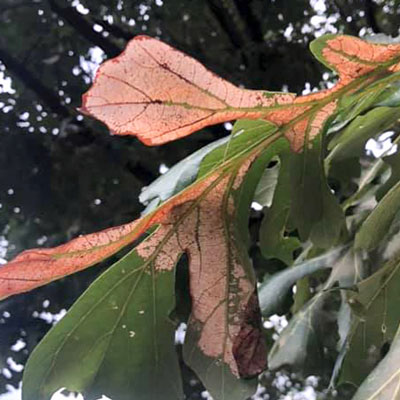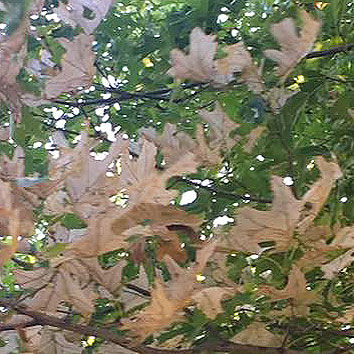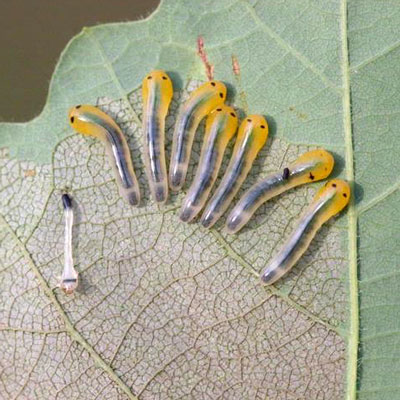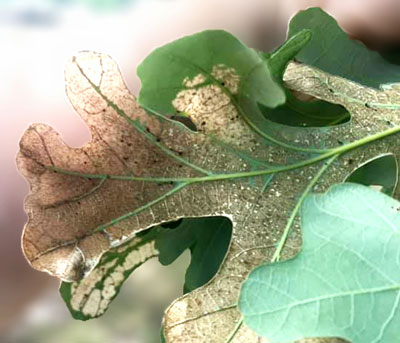More Sawfly Questions Than Ever!

There were several questions daily. On Facebook. In my newspaper columns. On my radio program. In my emails from friends. After church talking with friends.
Sawflies were obviously driving folks crazy. Oak leaves were being eaten away and folks were fearing the worst. But let me give you a few basic facts.
What you should know about sawflies…
• There are many species. Each carries the name of its host tree in its own name. So you have “oak sawflies,” “elm sawflies,” etc.

• The adult is a short-lived and almost unnoticeable wasp-like insect that lays her eggs on the leaf surface after using a part of her body to cut a slit into the leaf tissue, hence the name “saw” fly.

• The small larvae are gelatinous and harmless looking at first, but as they go through successive instars (phases), they get larger and their damage becomes more noticeable.

• The larvae feed on the bottoms of the leaves, skeletonizing them and leaving just a network of veins.
• There is usually only one generation per year. The larvae fall to the ground with the dead leaves at the end of the season and emerge the next spring to start the cycle over again.
• By the time the damage has become evident it’s too late for much control. However, if you catch them early enough general garden insecticides (not including B.t.) will usually stop them.
• The good news is that their damage is only temporary. Affected branches will leaf out again the following spring.
I posted a good reference sheet from Ohio State on this topic on Facebook last Sunday.
Here is a very thorough explanation of sawflies from the University of Wisconsin Master Gardeners program.
